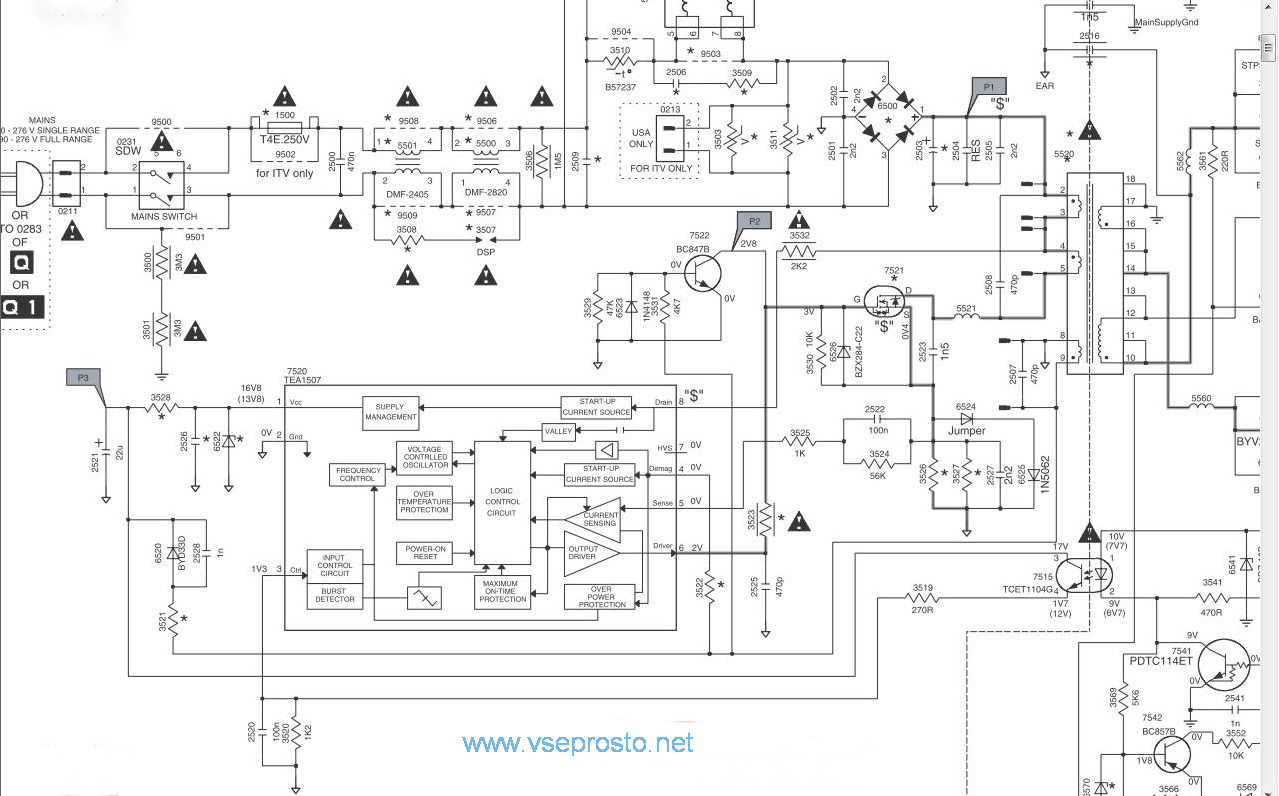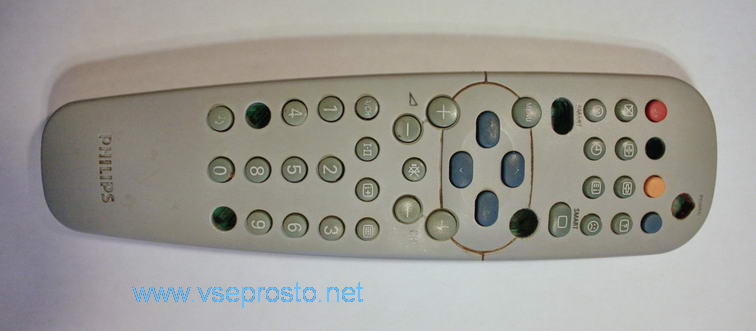Philips 29PT5207/60 does not turn on
Philips 29PT5207/60 chassis L01.2K3 tries to start and turns off without having time to show the images.
At all Philips TVs, in such cases suffer from security defects. It feels like the protections in them were created just so that there would be something to break in them
In this case, the defect ended up in the power supply.
Click on the photo to enlarge it to a readable view.

Electrolytic capacitor 22 uF x 25 volts. Naturally, I installed it with a reserve of 47 microfarads x 63 volts, partly to increase reliability (well, I don’t like running around for free later!), partly because at one time I had the foresight to buy a pack in bulk - 1000 pieces.
This defect could be looked for in different ways. You could get smart, try out the modes, and use scary words - OSCILLOSCOPE and the like
I usually do it simpler.
Brief TV Repair Instructions
1 . To start cleaning the board from dust. And you don’t have to smell the nasty stuff, and the heat is better dissipated, and the details are visible. In particularly advanced cases, I wash the board in warm water with kitchen detergent and dry it well.
2 . Inspecting the board on both sides for burns, swelling and leaks.
3
. Checking electrolytic capacitors using a device for checking ESR, homemade from the RET magazine.
Preferably everything. This does not take as much time as it might seem.
4 . I briefly run the ohmmeter, a simple Chinese broadband, on diodes, zener diodes, transistors in the block where there is supposedly a defect.
5 . Probably one of the main points is INTERROGING the owner of the device. It's interrogation. The more you can extract from the client, the more accurately the diagnosis can be made. How it went out, under what circumstances, did it open after that, etc.....
With this Philips it was all over quickly. I didn’t even have time to get smart
I fiddled with the remote control a little. If the owner were not penniless, it would be much easier to buy a new remote control and not suffer. But they asked us to do a European-quality repair of the TV (the whole repair with spare parts for 1 euro), so we had to wash the remote control, drill a couple of holes, and solder a regular button.
If there is not a lot of work, then you can afford to save the client some money. If a person is normal, then he will always appreciate your concern. And if you make your own TV, then sometimes it’s easier not to spend too much money.







